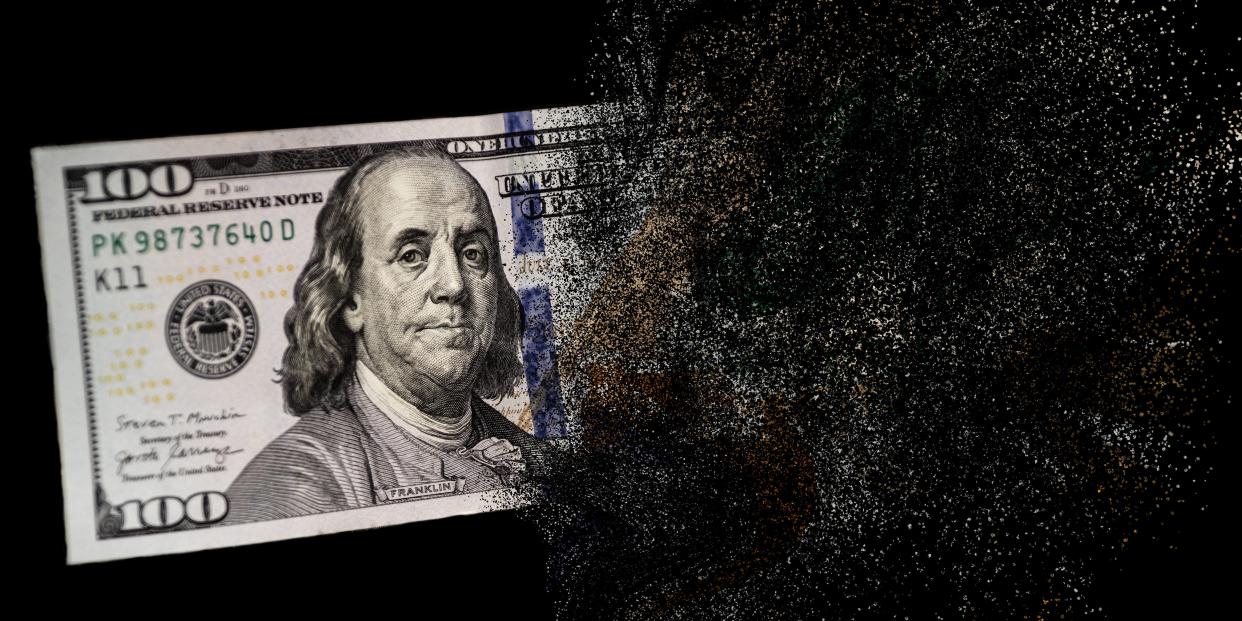The US government is paying $2 million of interest a minute as rates stay high

The US government is shelling out $2 million per minute in interest payments on its debt.
The surge in interest rate expenses has coincided with higher for longer interest rates.
The US government is on track to pay more than $1 trillion in interest expenses this year.
Soaring interest rates over the past two years have been a boon for bond investors who are keenly focused on preserving their capital and earning a rate of return that's ahead of inflation.
On the opposite side of that equation sits the US government, which has been shelling out a record amount in interest payments on its $34 trillion pile of debt.
In fact, the US Treasury paid about $89 billion in interest expenses on its outstanding debt in March, which comes out to be about $2 million per minute, according to Bloomberg.
Those interest payments are expected to continue rising for the foreseeable future as the government fails to curb its appetite for spending money and the Federal Reserve shows few signs of cutting interest rates anytime soon.
According to data from the St. Louis Fed, the federal government's interest payment expenditures are expected to eclipse $1 trillion this year, representing an all-time record and almost double the amount it paid in interest expenses before the Fed started to aggressively hike interest rates.
The US Treasury paid about $234 billion in interest expenses during the first three months of 2023.
With the 10-year US Treasury yield at about 4.50%, it reverses the zero-interest-rate period in which investors were forced to take on more and more risk to score a decent yield, whether it was via dividend-paying stocks or riskier tranches of debt.
Now investors can count on a stable return with no risk of losing their capital via US Treasurys, and they seem to be thrilled with it, evidenced by the whopping $6 trillion that's currently sitting in money market funds.
The surge in interest payments has led to some paradoxical thinking on Wall Street, with some arguing that higher interest rates have led to a more resilient consumer due to more stable and higher fixed income. And that in turn means higher interest rates have actually helped fueled inflation rather than tame it.
JPMorgan's Jack Manley said last month that if the Fed really wants to lower inflation, they should cut interest rates, not raise them.
"I think we're in this funny, peculiar chicken-and-the-egg type situation where you're not going to see meaningful downward pressure on inflation until you see meaningful downward pressure on shelter costs. And you're not going to see meaningful downward pressure on shelter costs, until the Fed lowers interest rates," Manley said.
Read the original article on Business Insider
